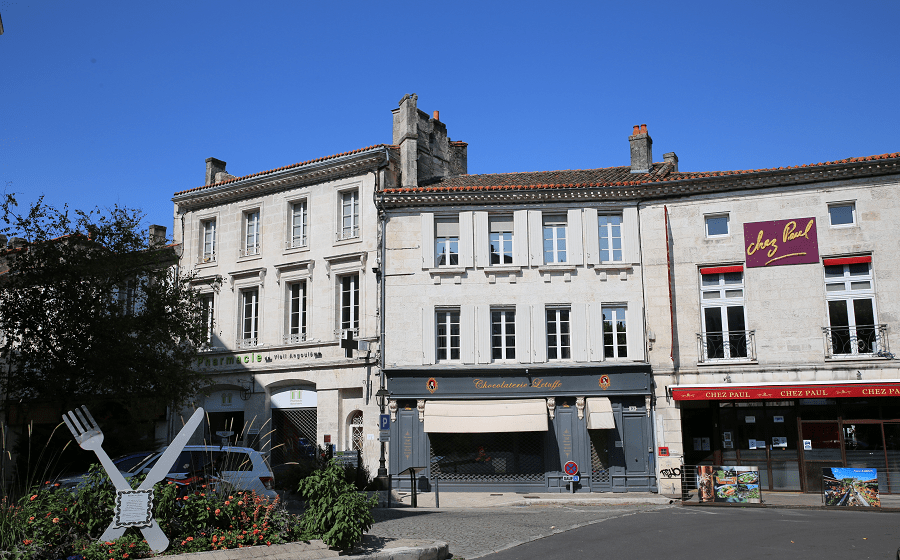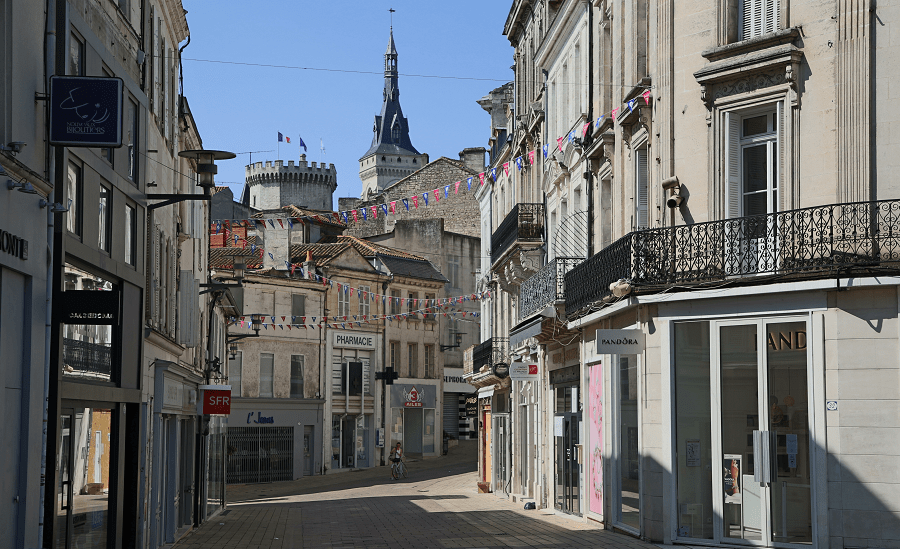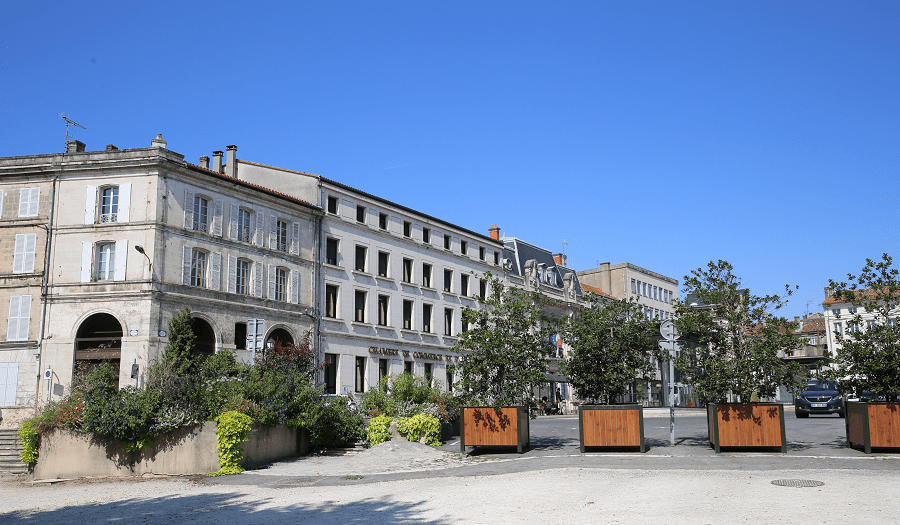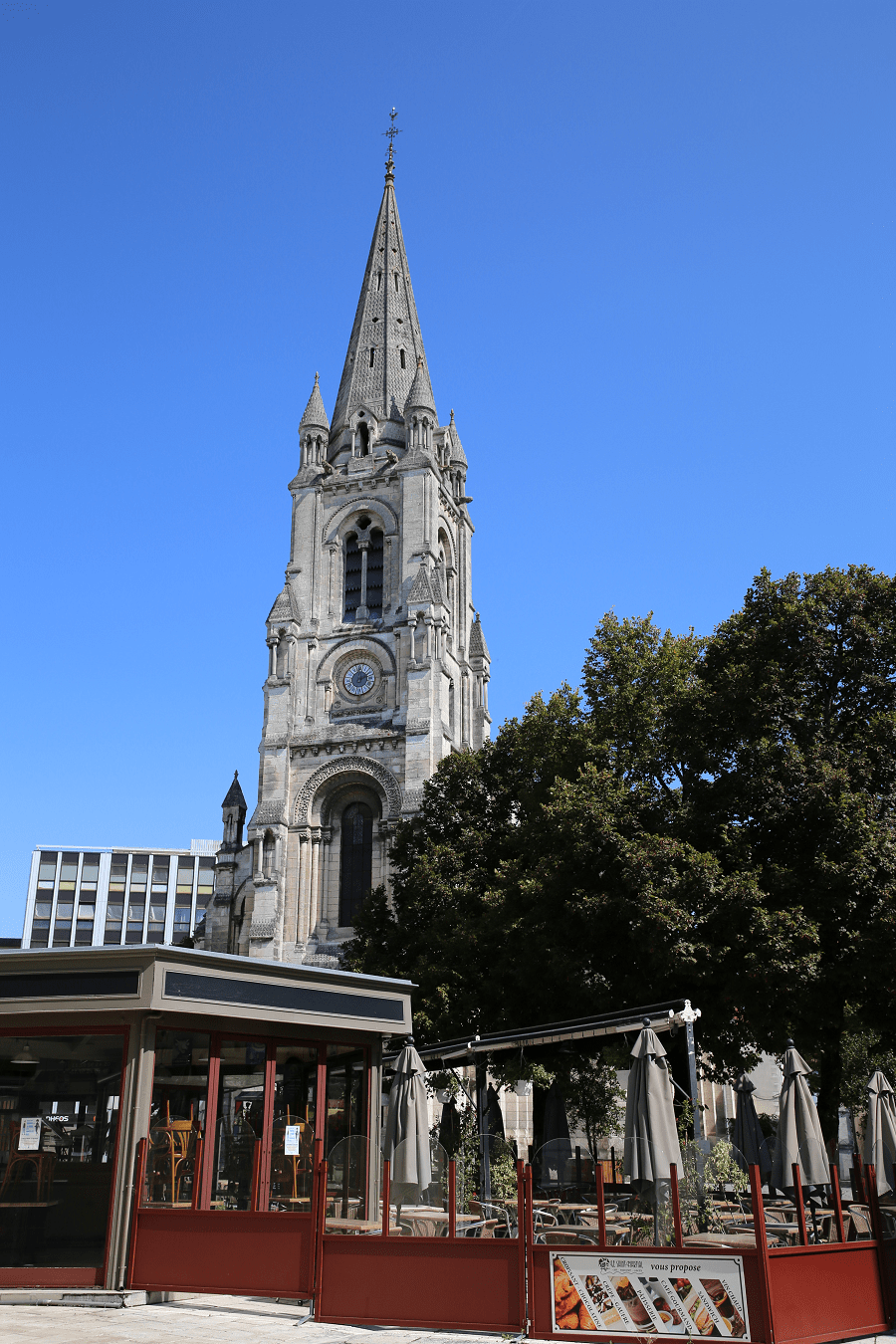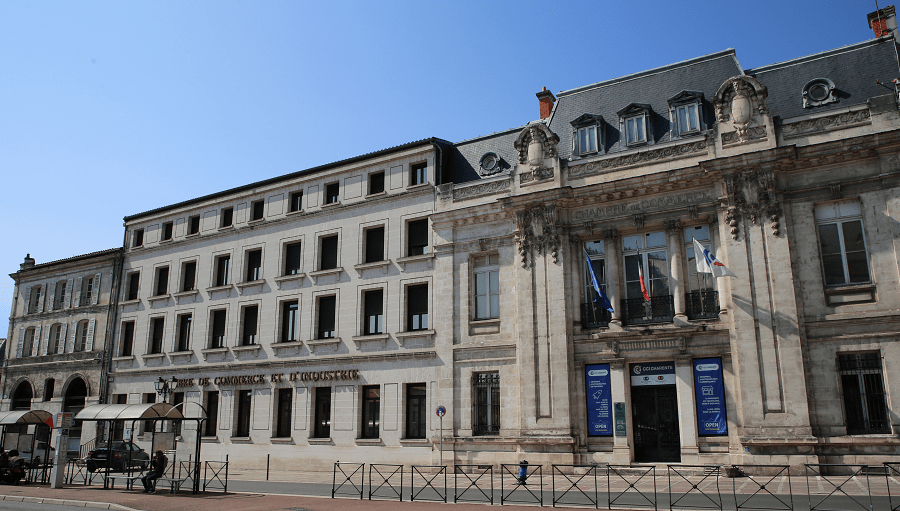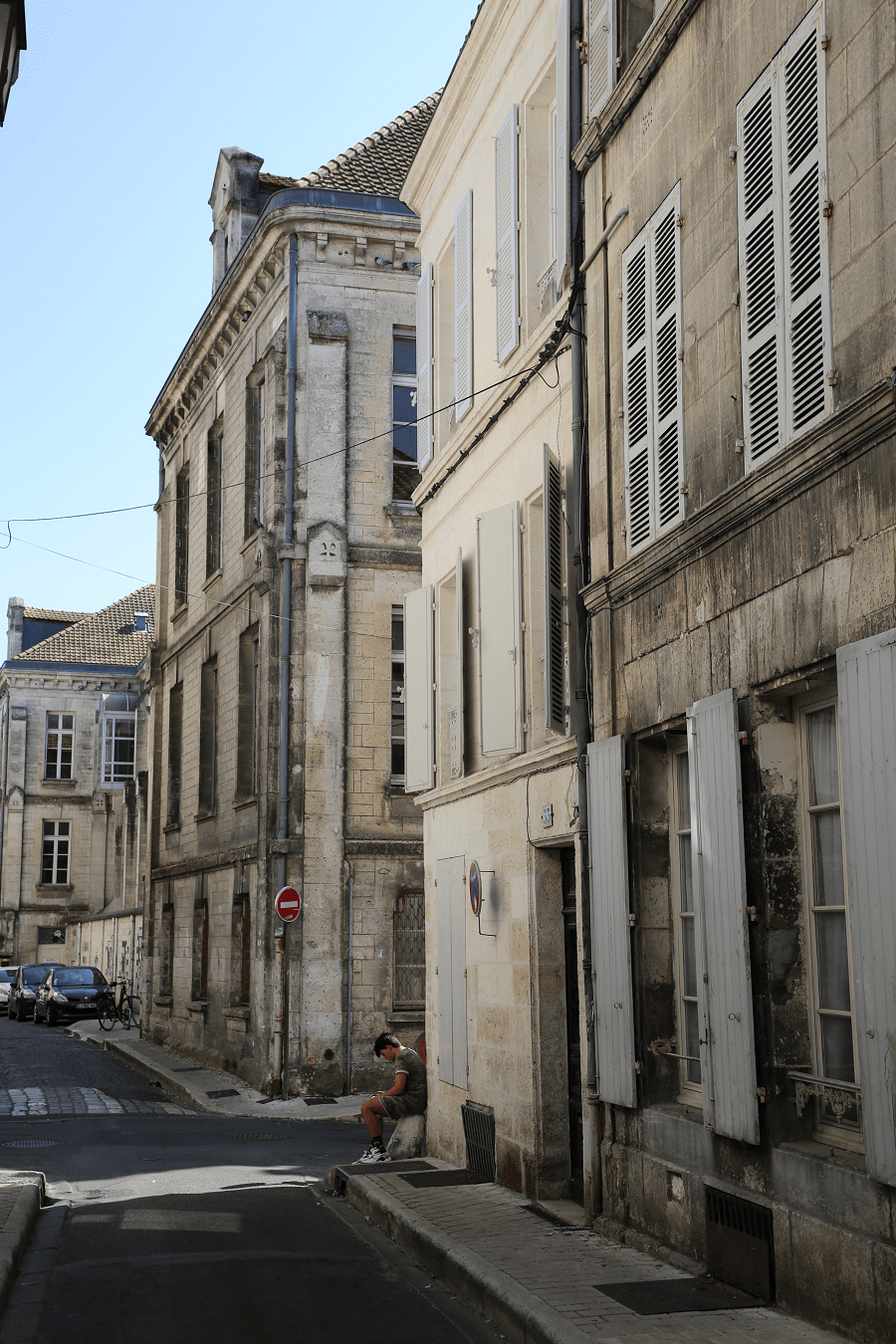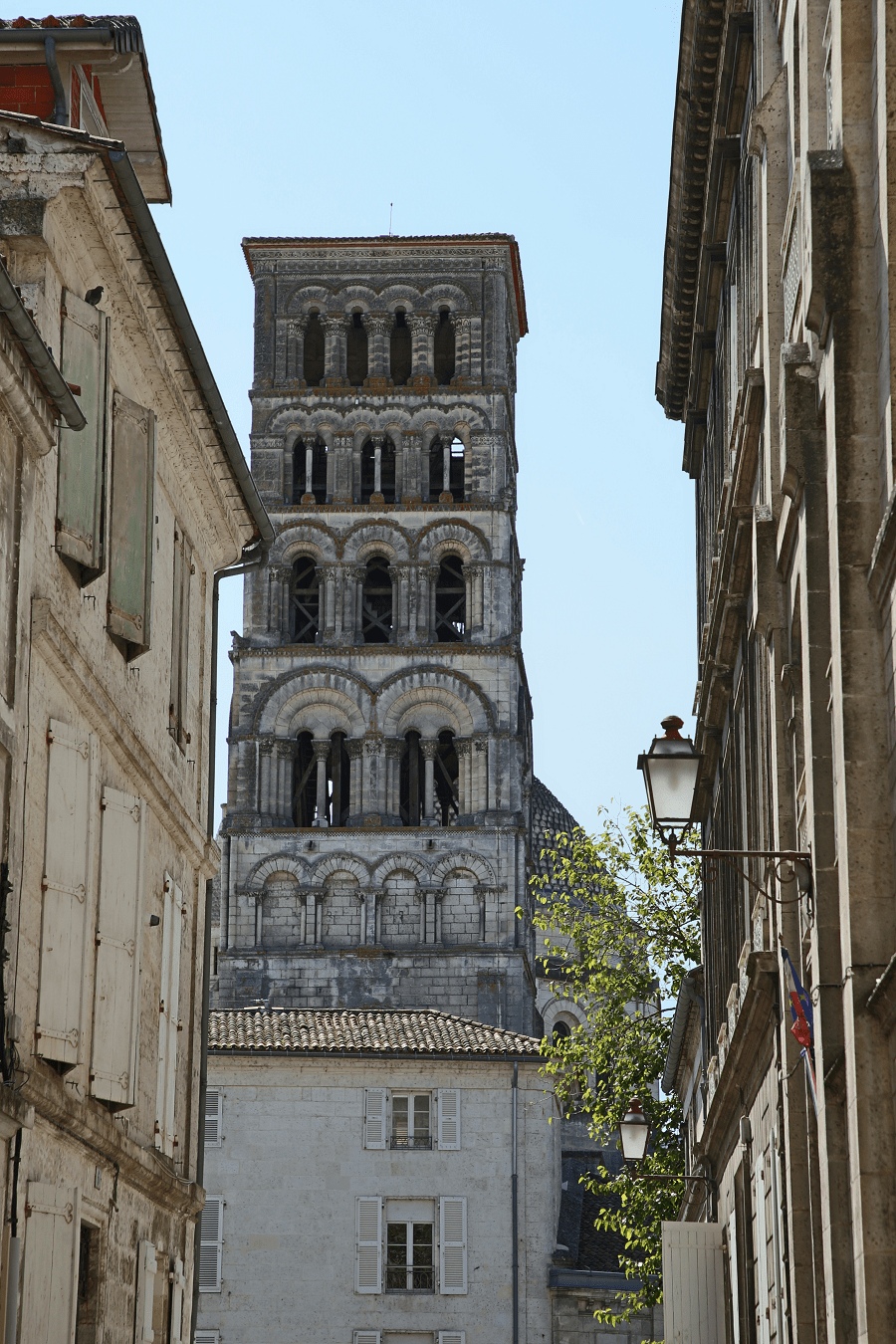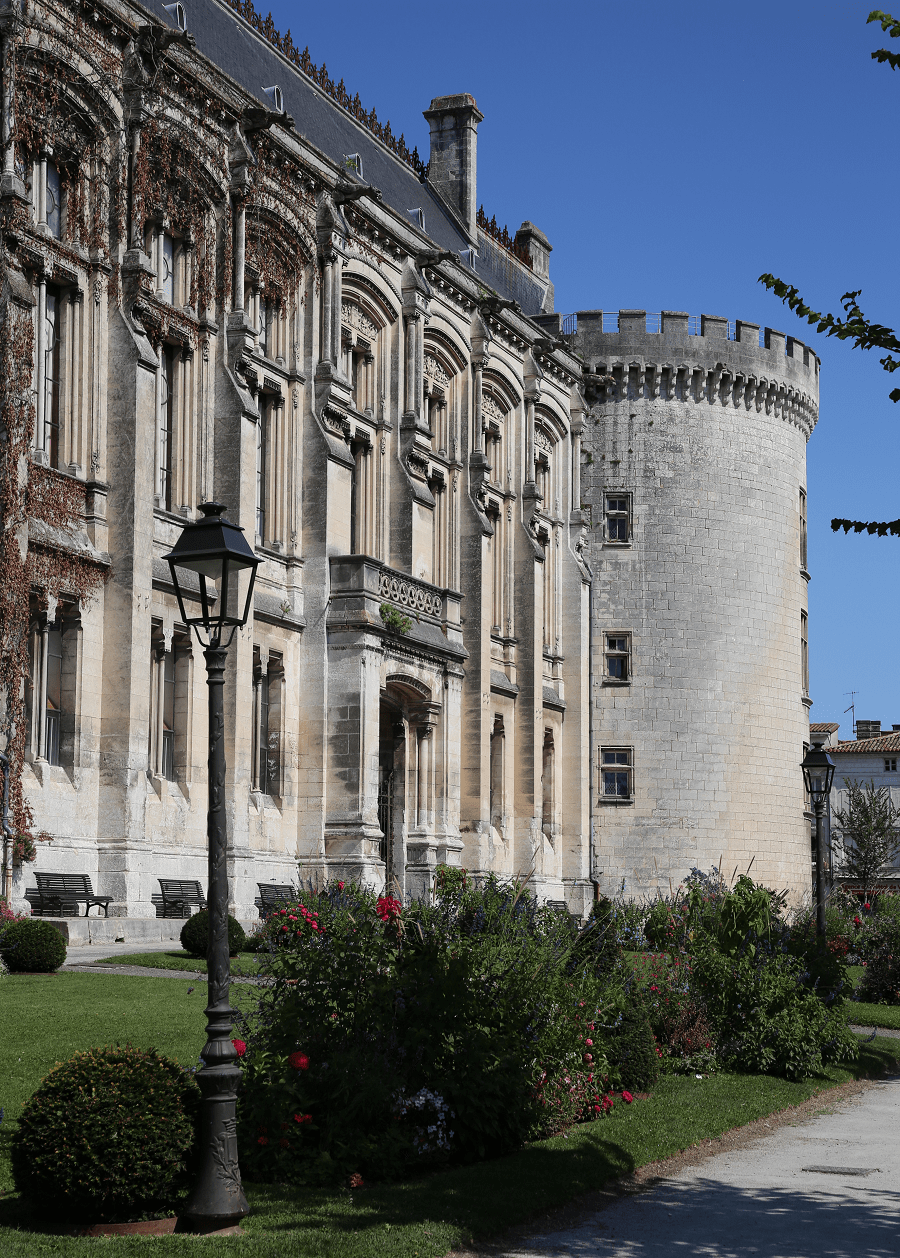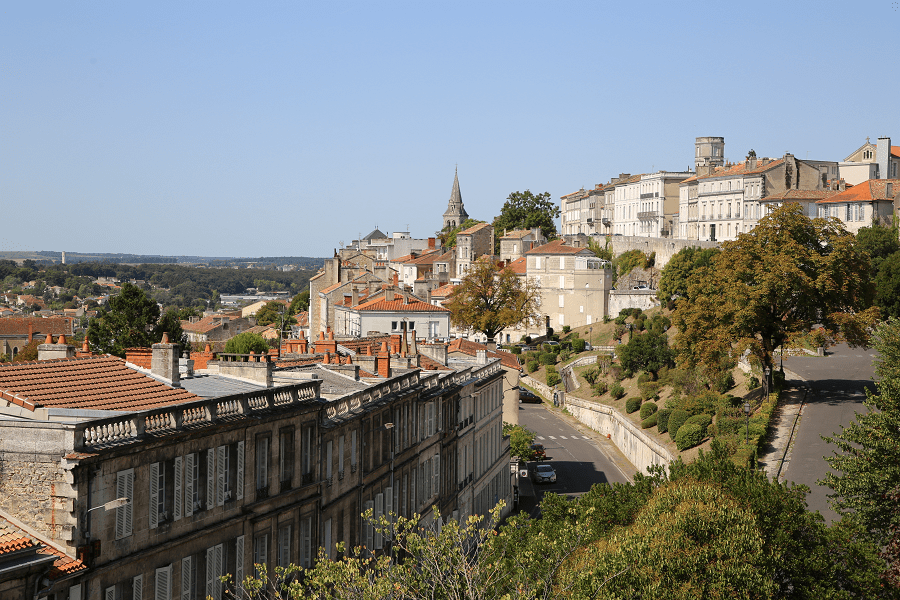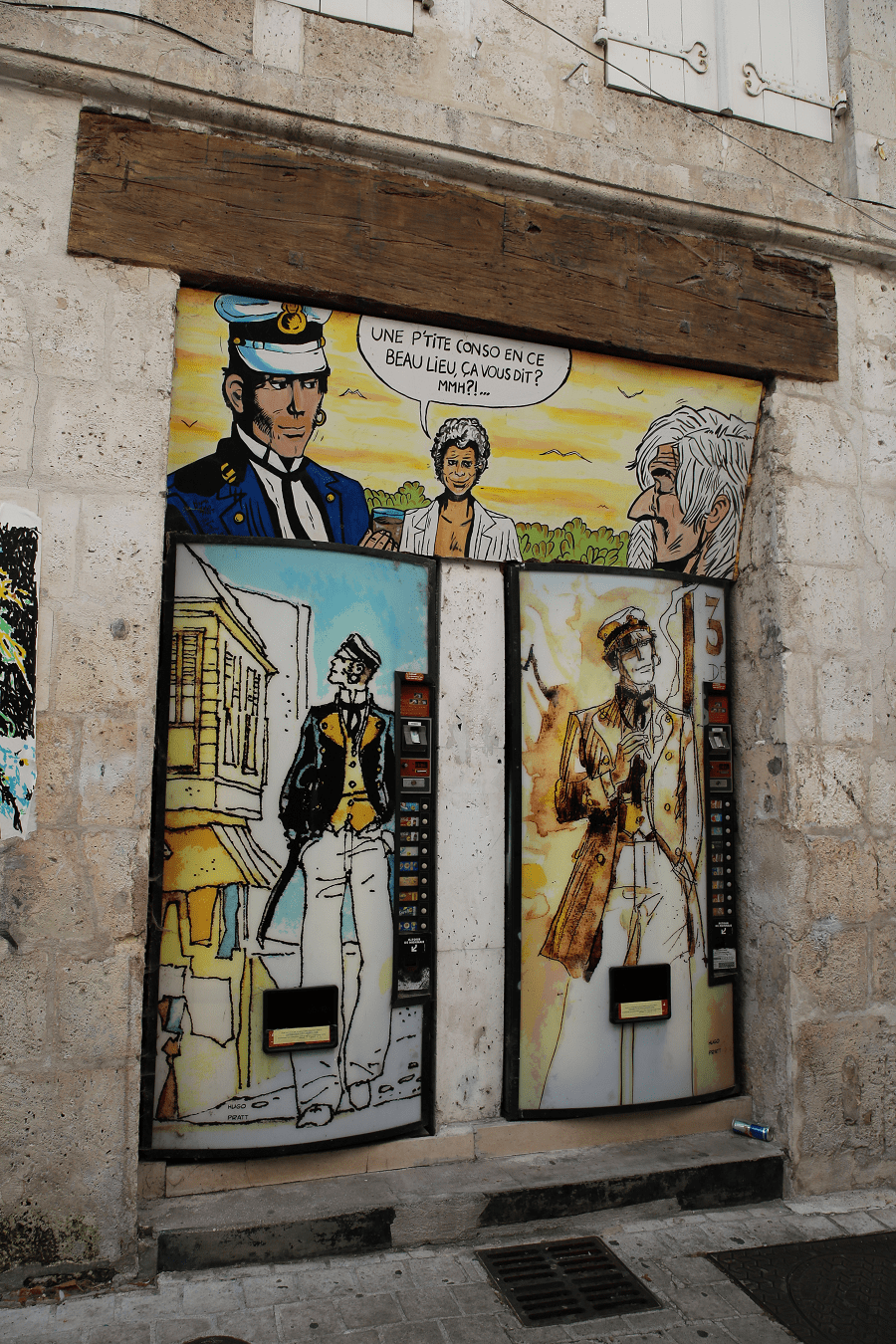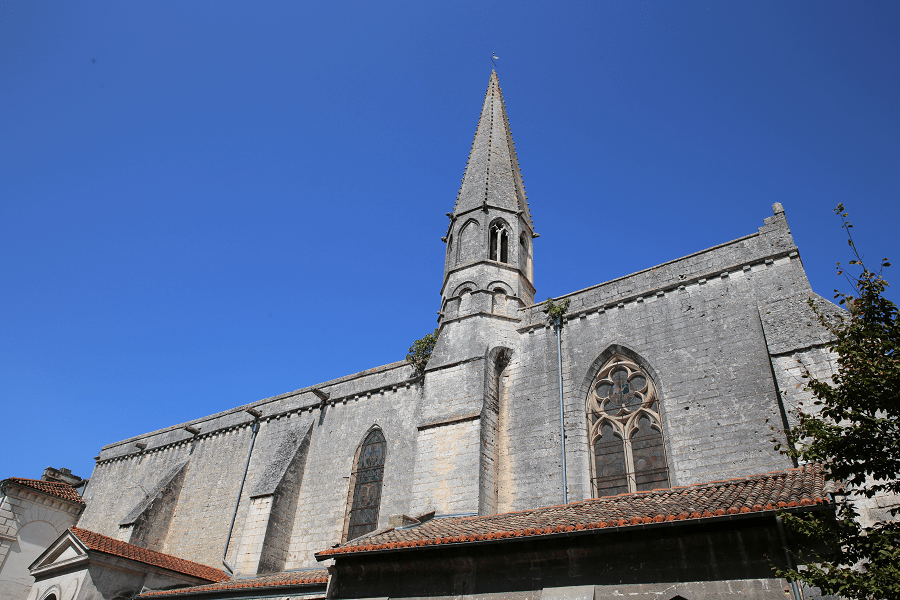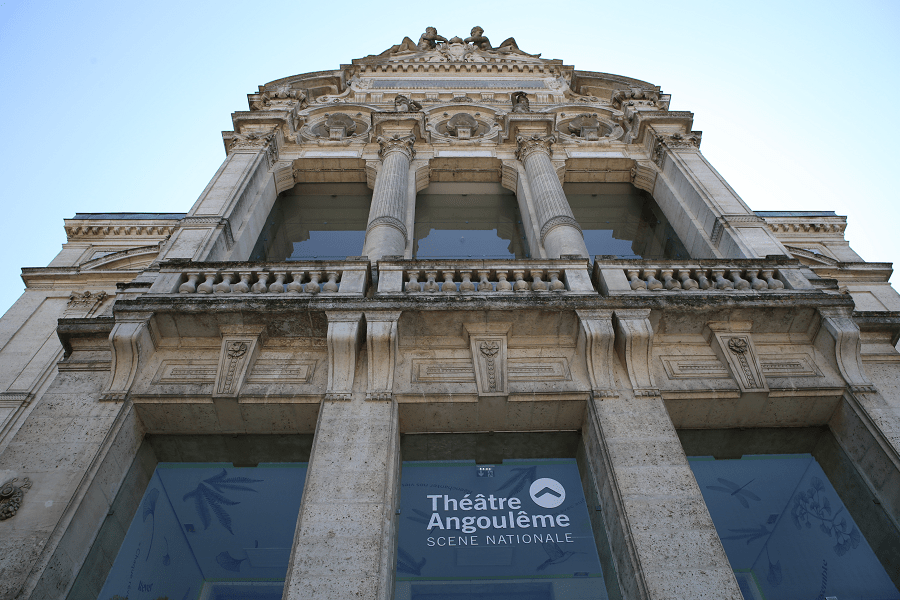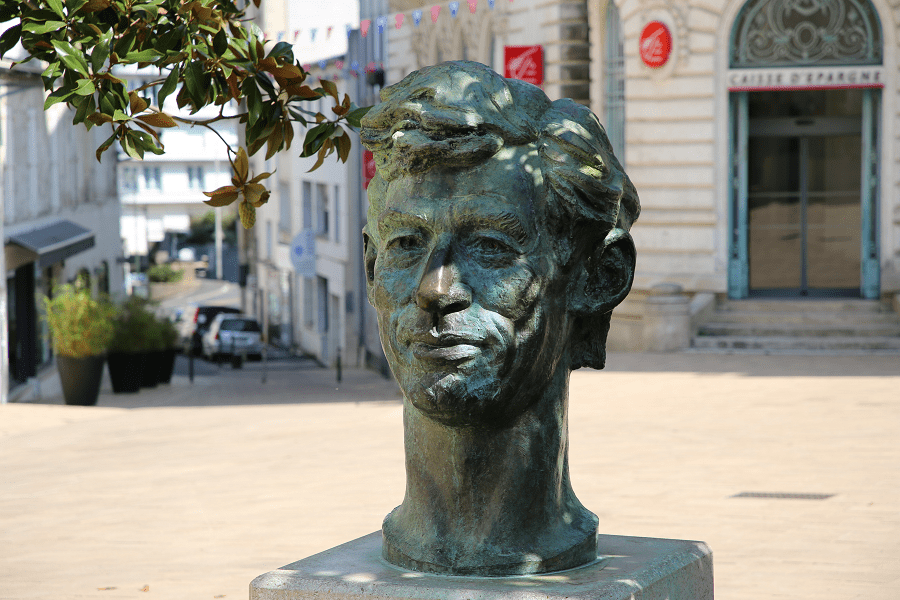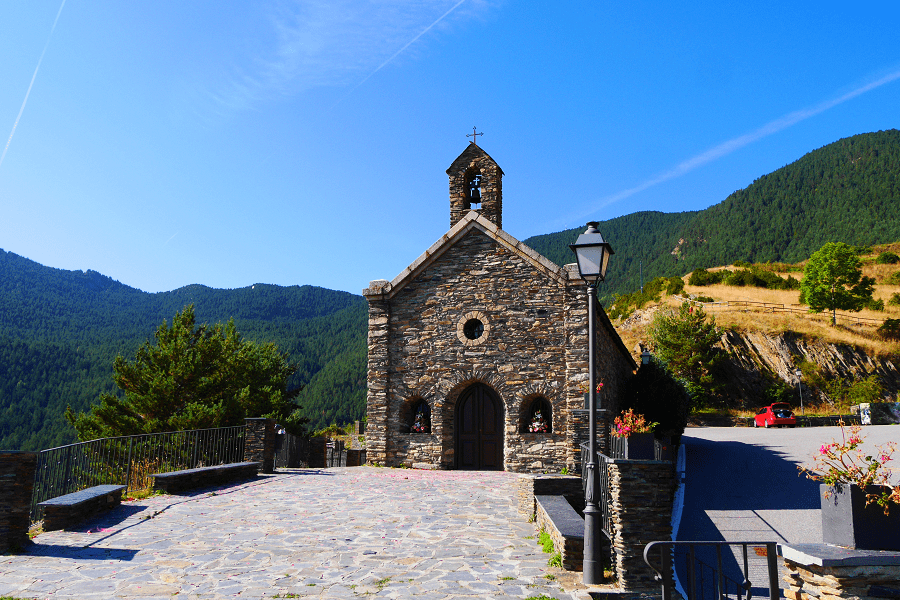Angoulême is a town in southwestern France, prefecture of the Charente department, in the Nouvelle-Aquitaine region.
Located on a plateau overlooking a meander of the Charente River, the city is nicknamed “Balcony of the Southwest”.
Former capital of Angoumois under the Ancien Régime, Angoulême has long been a coveted stronghold because of its position as a crossroads of important communication routes and has suffered many sieges. From its tumultuous past, the city, perched on its rocky outcrop and recognized as a city of art and history, has inherited a remarkable historical, religious and urban heritage that attracts many visitors and tourists.
In 1983 the Regional School of Fine Arts in Angoulême (EESI) was created with the first cartoon section in France. Angoulême is home to the International City of Cartoons and Images which registers all the comics published in France. There is also at la Cité the ENJMIN, which is the first state-funded school in Europe for the key subjects of video games and interactive media.
Angoulême, known as the “City of the Image” or “Capital of Cartoons”, is known for its “Painted walls” of cartoons that punctuate the city centre.
TOP 5 places must visit
Saint-Pierre Cathedral is a Romanesque-style cathedral that is the subject of a classification as historical monuments by the list of 1840.
A first cathedral was built during the fourth century, dedicated to Saint Saturnin. The building disappeared when Angoulême was taken by Clovis in 508. Clovis then King Charibert ordered the reconstruction of the cathedral in honor of Saint Pierre.
The cathedral was transformed into a temple of Reason during the Revolution.
Major restorations carried out from 1852 to 1879, by the architect Paul Abadie, under the aegis of Antoine-Charles Cousseau, Bishop of Angoulême, significantly modified the interior and exterior of the building.
Angoulême town hall is a public building built from 1858 to 1869 in the heart of the upper town of Angoulême.
Designed by the architect Paul Abadie in a rather eclectic style inspired in large part by medieval aesthetics and punctuated by some references to the Renaissance or Classicism, it stands on the site of the former count’s castle with its only remains: the Lusignan keep (thirteenth century) and the Valois tower (fifteenth century). The belfry, which overhangs the whole and accentuates its monumental character, is largely posterior to these two constructions (nineteenth century).
The town hall is surrounded by terraces of cafes and restaurants as well as flower beds inspired by French gardens. Nearby, Place New York connects the town hall and the promenade du rempart Desaix, a little further to the west.
The Abbey of Saint-Cybard was a Benedictine monastery located just outside the northern city walls of Angoulême. According to Gregory of Tours in the Historia Francorum (VI, 8), Saint Eparchius founded the monastery in the sixth century. Little is known about the institution after its founding until 852, when King Charles the Bald confirmed a series of gifts to the abbey made by Abbot Launus, who was also the bishop of Angoulême. It suffered along with other monasteries and cities of the region during the Norman invasions of the ninth century, but adopted the Benedictine rule in 938. Between 1075 and 1087 Count Fulk of Angoulême handed Saint-Cybard over to the Cluniac abbey of Saint-Jean-d’Angély. While Saint-Jean’s abbot was to appoint the abbot of Saint-Cybard, it was not until 1098 or 1099 when the monks of Saint-Cybard were forced to accept the arrangement. This relationship ended in 1161. In 1568, during the Wars of Religion, Protestants seized Angoulême and destroyed the monastery. There now remains only the north side of the abbey church along with sections of the chapels located in the northwest corner of what was once the cloister.
Since Roman times, Ramparts have surrounded the Plateau d’Angoulême. Destroyed and rebuilt many times, their crowning glory was definitively removed in the nineteenth century. The remaining parts date from the fourth, thirteenth and sixteenth centuries (ramparts of the Duke of Épernon), which are owned by the municipality. The ramparts of Angoulême form a balcony on the Charente, and they are classified historical monuments. The tour of the ramparts is, with the cathedral, one of the main tourist attractions of the city.
The Angoulême theatre is a national stage which allows everyone, young and old, to discover a rich range of shows each year, from classical to contemporary creation. Each season the theatre welcomes more than 50,000 spectators and offers nearly 200 performances in all disciplines: theatre, music, dance, performing arts, etc. The Angoulême theatre dates from the end of the nineteenth century. It was imagined by the architect Antoine Soudée and built between 1867 and 1870. Inaugurated by the city of Angoulême on 14 May 1870, it has a beautiful facade, which includes two statues by sculptor Jules Blanchard representing comedy and drama. The theatre is built in the centre of a new residential area built in the old park of the castle of the Counts of Angoulême.
Museums
The Musée d’Angoulême, formerly the Musée des beaux-arts d’Angoulême, located beside the Angoulême Cathedral in the heart of the historical centre of the city, it is classified as a Musée de France, and has important archaeological, ethnographic and artistic collections. It also hosts temporary exhibitions and conferences.
The Angoulême paper museum opened in 1988. The paper museum is located on the banks of the Charente on the site of the former Joseph Bardou Le Nil cigarette paper mill. It presents exhibitions on industrial stationery of the nineteenth and twentieth centuries, on related industries (printing, metal fabric and felt factories, mechanics, etc.), on the use of paper and occasionally contemporary art presentations.
The museum of the Archaeological and Historical Society of Charente is located in Angoulême in the mansion which houses the headquarters of the Society. Founded in Angoulême by Eusèbe Castaigne and several Charente scholars on 16 August 1844, the SAHC is one of the oldest French scientific societies. The presentation of the collections of the museum labelled “Musée de France” revolves around several galleries and exhibition rooms showing a panorama of Charente heritage and archaeological research in Charente: prehistoric and protohistoric objects.
Gastronomy and best restaurants
What to eat & drink is a must
- Pineau des Charentes
- Cognac
- Marguerites (chocolates)
- Duchesses d’Angoulême (caramelised brown nougat)
- Charente snails known here as cagouilles
- Cornuelles triangular cakes (only during the Easter period)
- Lolmède macaroons
- Charente melon
- Chalais veal
- Barbezieux capon
- Cheeses: Taupinère, Carrément Charentais, Chabichou and Mothais sur feuille
- Charentes-Poitou butter (PDO)
- Galette Charentaise cake
- Noix Charentaise (pastry)
- Grillon Charentais paté
- Farcis Charentais stuffing
- Coffee from La Brûlerie des Valois
There are two Michelin list restaurants in the city:
- Cokotte, 6 rue Trois-Notre-Dame, 33 – 53 EUR • Traditional Cuisine
- Le Terminus, 3 place de la Gare, 28 – 80 EUR • Seafood
Shopping
The main shopping area is the pedestrianised Rue Hergé where you’ll find most of the popular national clothes shops and a few independent stores.
Central Markets:
Halles Centrales: Every morning 7am – 1pm
Place Victor Hugo: Tue – Sun, 7am – 1pm
Transport and how to get to?
Train services
The following services call at Angoulême:
High speed services (TGV) Paris – Tours – Poitiers – Bordeaux
High speed services (TGV) Lille – Aeroport CDG – Tours – Poitiers – Bordeaux
High speed services (TGV) Strasbourg – Aeroport CDG – Tours – Poitiers – Bordeaux
Local services (TER Nouvelle-Aquitaine) Bordeaux – Libourne – Angoulême
Local services (TER Nouvelle-Aquitaine) Angoulême – Poitiers
Local services (TER Nouvelle-Aquitaine) La Rochelle – Rochefort – Saintes – Cognac – Angoulême
Local services (TER Nouvelle-Aquitaine) Royan – Saintes – Cognac – Angoulême
Local services (TER Nouvelle-Aquitaine) Angoulême – Limoges
Airport services
Angoulême – Cognac International Airport, also known as Angoulême – Brie – Champniers Airport, (IATA: ANG, ICAO: LFBU) is an airport located 15 kilometres northeast of Angoulême, between Brie and Champniers, all communes of the Charente département in the Nouvelle-Aquitaine région of France.
Distances by car:
From Nantes (tolls): 3 h (277 km) via A83
From La Rochelle: 1 h 54 min (148 km) via N141
From Saintes: 1 h 7 min (72.0 km) via N141
From Cognac: 46 min (44.4 km) via N141
From Bordeaux: 1 h 39 min (124 km) via N10
From Saumur: 2 h 40 min (204 km) via N10
From Biarritz (tolls): 3 h 13 min (317 km) via A63 and N10
From Toulouse (tolls): 3 h 34 min (357 km) via A62
From Monaco (tolls): 9 h 10 min (936 km) via A62
From Marseille (tolls): 7 h 55 min (760 km) via A62
From Nice (tolls): 8 h 59 min (925 km) via A62
From Perpignan (tolls): 5 h 19 min (561 km) via A61 and A62
From Andorra (tolls): 5 h 46 min (537 km) via A62
Main information
Area: 21.9 sq. km
Population: 41 740
Languages: French
Currency: euro
Visa: Schengen
Time: Central European UTC +1
GPS coordinates: 45°39′N 0°10′E




